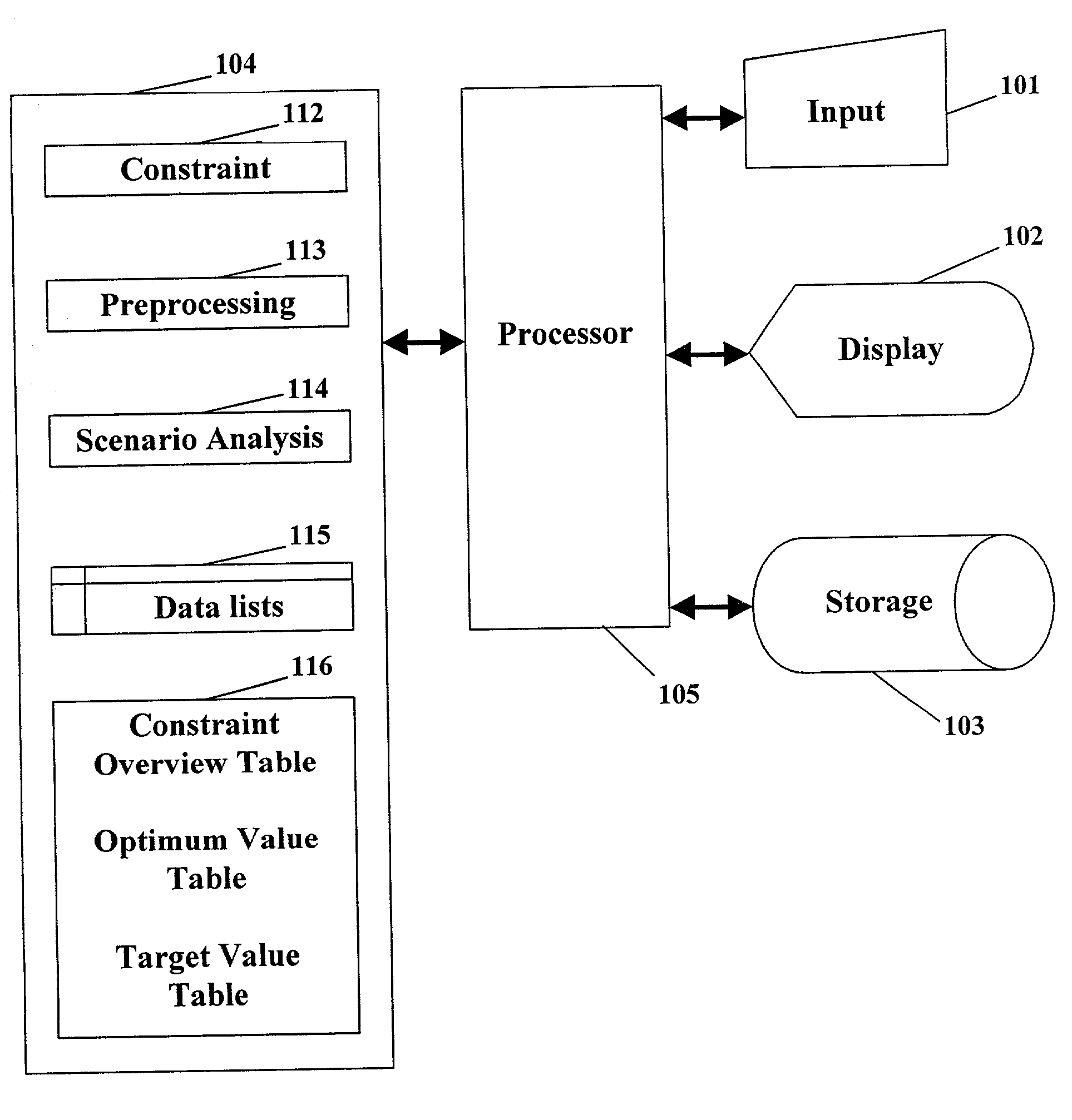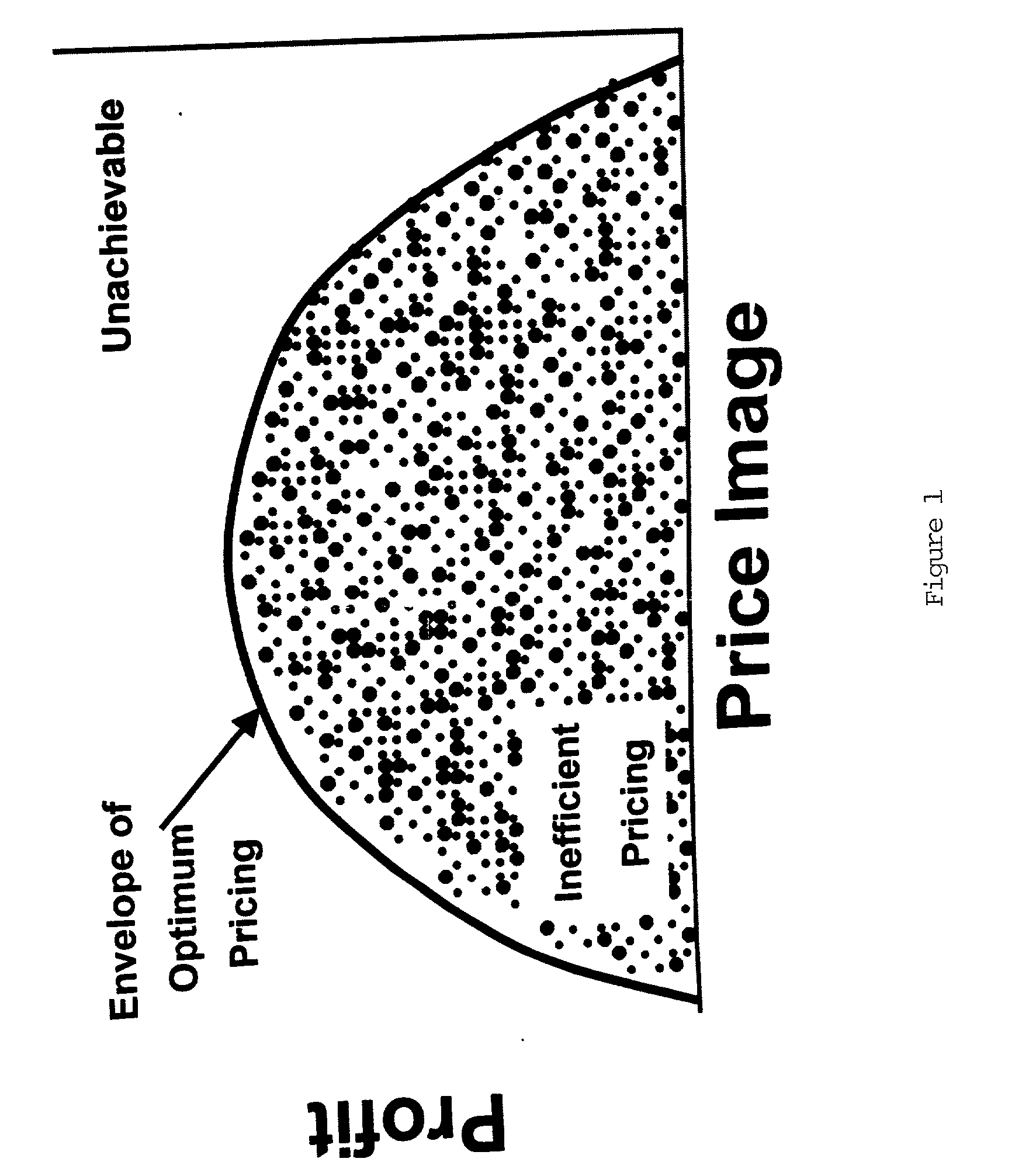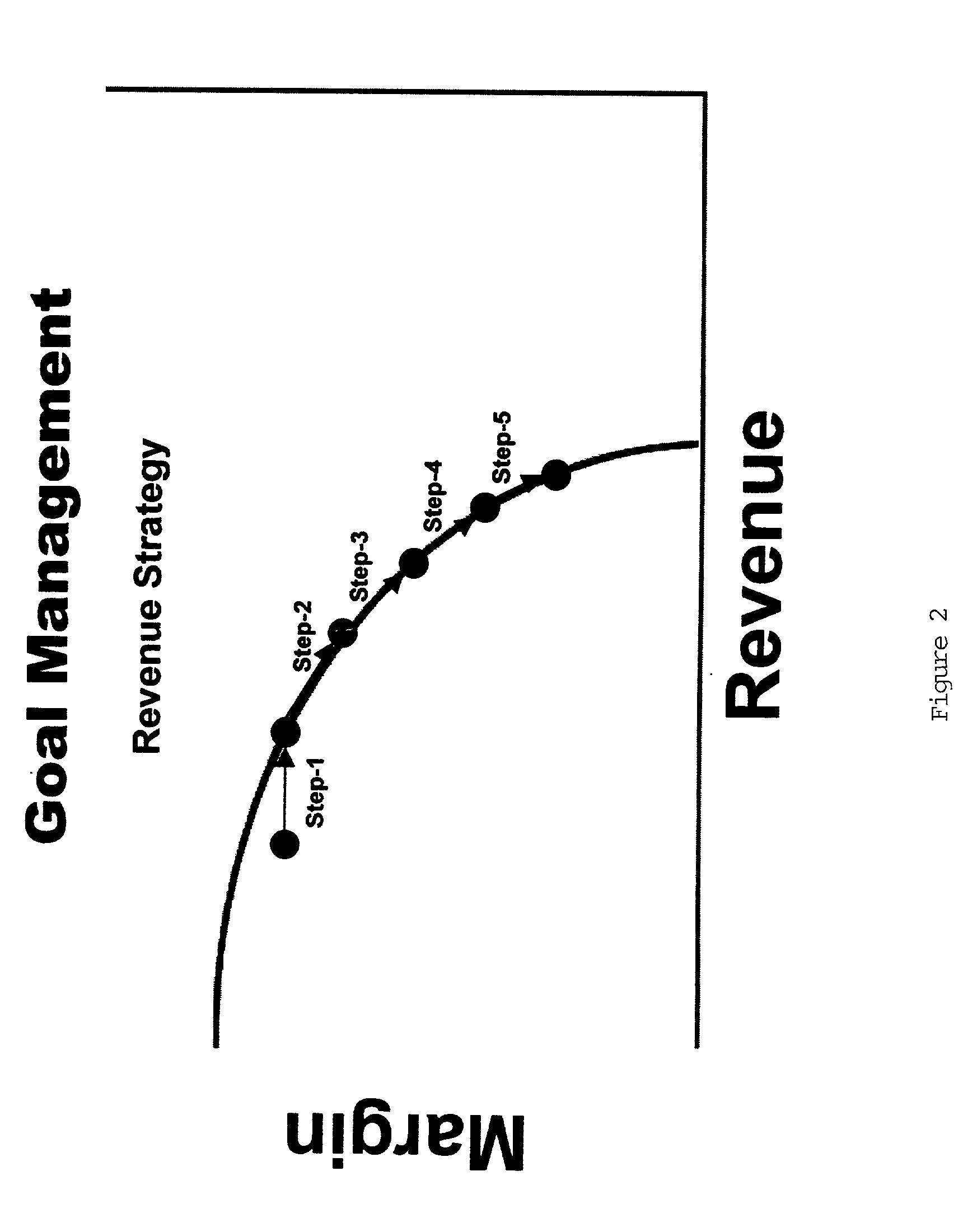Strategic planning and optimization system
a strategic planning and optimization system technology, applied in the direction of instruments, electric/magnetic computing, analogue computers, etc., can solve the problems of enormous complexity of the model, computational inability to optimize the enterprise planning model, economic inefficiency,
- Summary
- Abstract
- Description
- Claims
- Application Information
AI Technical Summary
Problems solved by technology
Method used
Image
Examples
Embodiment Construction
[0050] The following description is provided to enable any person skilled in the art to make and use the invention and sets forth the best modes contemplated by the inventor of carrying out his invention. Various modifications, however, will remain readily apparent to those skilled in the art, since the general principles of the present invention have been defined herein specifically to provide an automated Strategic Planning and Optimization System.
Planning Model
[0051] The present invention provides an automated system for implementing a strategic planning model. Such models allow optimizations based on a variety of decision variables. Essentially, these variables can be any of a large number of decisions that must be made in planning a business. The following discussion should not be considered as exhaustive, but price is certainly one of the most apparent decision that most business planners face. Other decision variables include promotional media (how should the product or produ...
PUM
 Login to View More
Login to View More Abstract
Description
Claims
Application Information
 Login to View More
Login to View More - R&D
- Intellectual Property
- Life Sciences
- Materials
- Tech Scout
- Unparalleled Data Quality
- Higher Quality Content
- 60% Fewer Hallucinations
Browse by: Latest US Patents, China's latest patents, Technical Efficacy Thesaurus, Application Domain, Technology Topic, Popular Technical Reports.
© 2025 PatSnap. All rights reserved.Legal|Privacy policy|Modern Slavery Act Transparency Statement|Sitemap|About US| Contact US: help@patsnap.com



